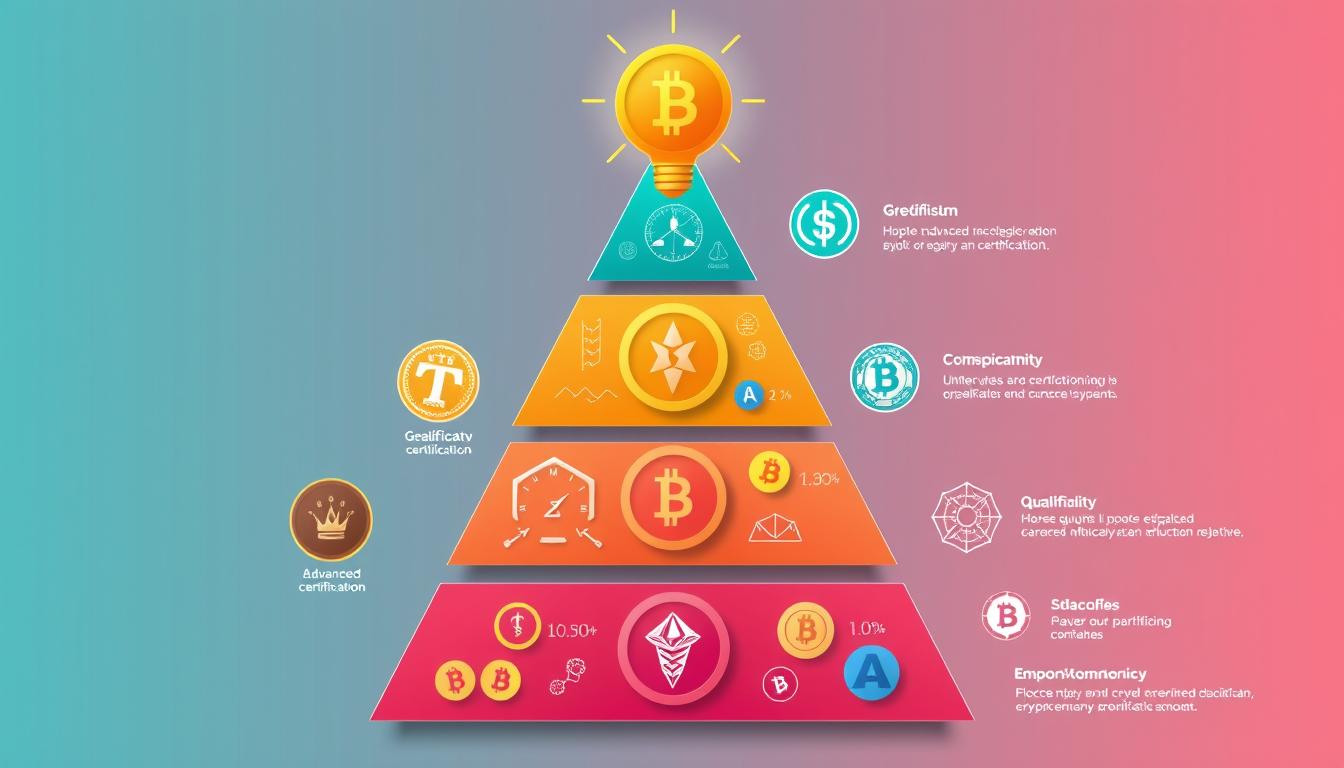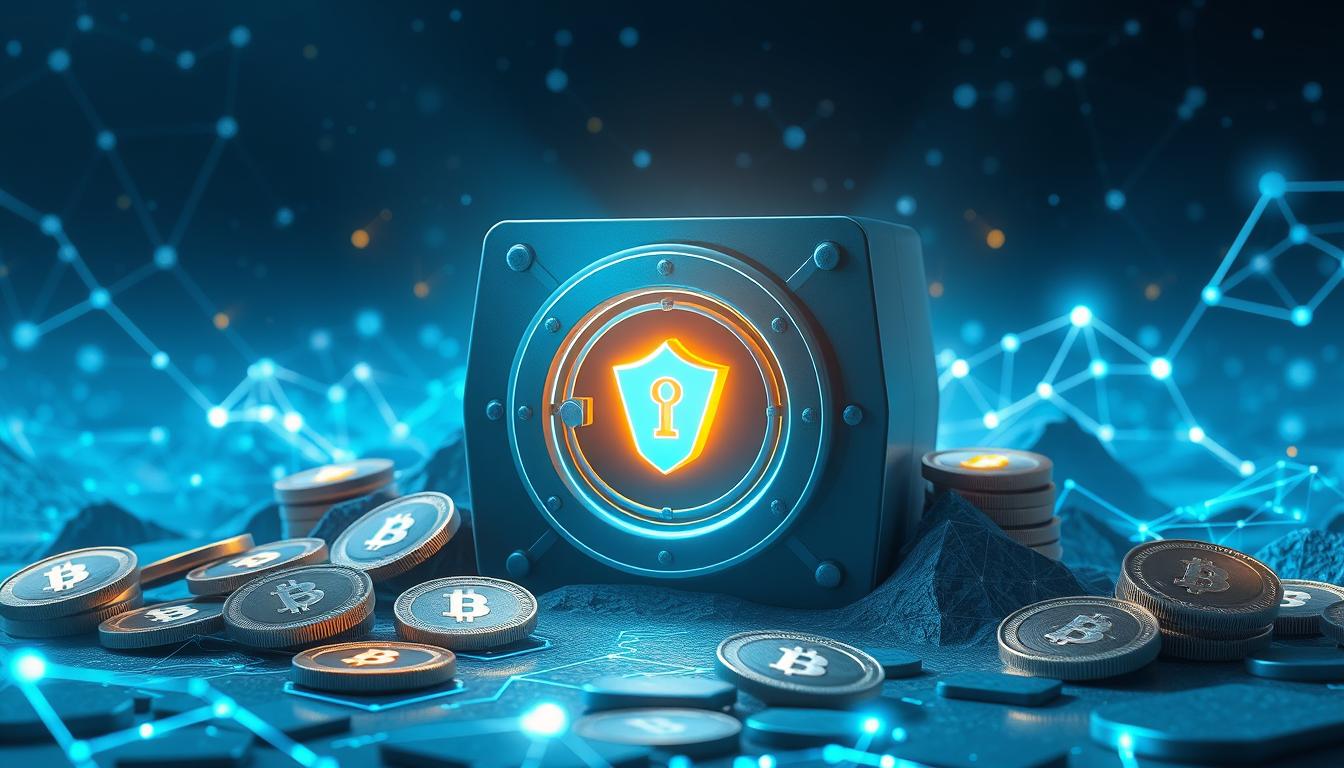Now Reading: Cryptocurrency Mining: How It Works Explained
- 01
Cryptocurrency Mining: How It Works Explained
Cryptocurrency Mining: How It Works Explained

Cryptocurrency mining is a crucial process that underpins the security and stability of various digital currencies, such as Bitcoin and Ethereum. As the digital landscape continues to evolve, understanding the intricacies of cryptocurrency mining has become increasingly important for both investors and enthusiasts alike. This article delves into the world of cryptocurrency mining, exploring the fundamental concepts, the hardware and software requirements, the impact on the environment, and the regulatory landscape surrounding this technology.
Key Takeaways
- Cryptocurrency mining is the process of verifying and adding transactions to the blockchain, the distributed ledger that records all cryptocurrency activities.
- Miners use specialized computer hardware and software to solve complex mathematical problems, earning cryptocurrency as a reward for their efforts.
- The Proof of Work (PoW) consensus mechanism, which requires significant computational power, is the most widely used approach for cryptocurrency mining.
- Mining rigs and hardware, such as application-specific integrated circuits (ASICs) and graphics processing units (GPUs), play a crucial role in the mining process.
- Mining pools, where miners collaborate to increase their chances of earning rewards, have become a common practice in the industry.
Introduction to Cryptocurrency Mining
Cryptocurrency mining is a fundamental process that underpins the secure operation of blockchain networks. It involves verifying and adding new transactions to the blockchain, the decentralized public ledger that forms the backbone of cryptocurrencies.
At the heart of cryptocurrency mining is the use of specialized computer hardware to solve complex mathematical problems. Miners are rewarded with newly created cryptocurrency units for their efforts, incentivizing them to contribute to the network’s security and stability.
The process of what is cryptocurrency mining is crucial for maintaining the integrity of the blockchain and ensuring the continued growth and adoption of digital currencies. By understanding how cryptocurrency mining works, individuals can gain insight into the inner workings of this revolutionary technology.
- Verifying Transactions: Miners validate the legitimacy of cryptocurrency transactions by solving cryptographic puzzles.
- Adding to the Blockchain: Validated transactions are then bundled into “blocks” and added to the blockchain, creating a permanent and tamper-resistant record.
- Receiving Rewards: Miners are rewarded with newly minted cryptocurrency tokens for their contributions to the network.
“Cryptocurrency mining is the backbone of blockchain technology. It’s what makes it secure, decentralized, and work in a trustless way.”
The intricacies of cryptocurrency mining extend beyond the basic process of verifying and adding transactions. Miners must also contend with factors such as mining difficulty, energy consumption, and the competitive nature of the mining landscape.
By understanding the fundamentals of what is cryptocurrency mining and how cryptocurrency mining works, individuals can better navigate the rapidly evolving world of digital currencies and blockchain technology.
What is Cryptocurrency Mining?
Cryptocurrency mining is the backbone of the blockchain network, ensuring the integrity and security of the digital ledger. Miners use powerful computing hardware, known as mining rigs, to solve complex mathematical problems and validate transactions. The cryptocurrency mining process involves competing to be the first to solve these problems, with the successful miner being rewarded with newly minted cryptocurrency.
Understanding the Mining Process
The cryptocurrency mining process is critical for maintaining the decentralized nature of cryptocurrencies like Bitcoin and Ethereum. Miners utilize their computing power to validate and record transactions on the blockchain, ensuring the network’s security and transparency. This process not only introduces new coins into circulation but also helps prevent double-spending and other malicious activities.
- Miners compete to solve complex cryptographic puzzles, known as “proof-of-work,” to validate transactions and add new blocks to the blockchain.
- The first miner to solve the puzzle is rewarded with a certain amount of the cryptocurrency, which serves as an incentive for their efforts.
- As more miners join the network, the mining difficulty increases, requiring more powerful mining rigs and greater computational resources to remain competitive.
The cryptocurrency mining process plays a crucial role in the overall ecosystem, ensuring the security, transparency, and decentralization of the network. By understanding this process, individuals can explore the potential opportunities and challenges within the world of cryptocurrency mining.
How Does Cryptocurrency Mining Work?
Cryptocurrency mining is a crucial process that helps maintain the security and integrity of blockchain networks. At its core, the mining process involves a series of steps that validate and record transactions on the blockchain. Let’s delve into the details of how cryptocurrency mining works.
The mining process begins with miners collecting a set of pending transactions, known as a “block.” These transactions are then verified and validated by the miners using their computing power. The miners use specialized hardware, such as application-specific integrated circuits (ASICs) or graphics processing units (GPUs), to solve a complex mathematical problem associated with the block.
The first miner to successfully solve this problem is rewarded with a predetermined amount of the cryptocurrency. This reward acts as an incentive for miners to continue contributing their computing power to the network, ensuring the ongoing maintenance and growth of the blockchain.
- Miners collect a set of pending transactions, known as a “block.”
- Miners use their computing power to solve a complex mathematical problem associated with the block.
- The first miner to solve the problem and validate the block is rewarded with a predetermined amount of the cryptocurrency.
The mining process is essential for the functioning of cryptocurrency networks, as it helps to maintain the decentralized and secure nature of the blockchain. By participating in the mining process, miners play a vital role in ensuring the trustworthiness and transparency of the cryptocurrency ecosystem.
| Step | Description |
|---|---|
| 1. Collect Transactions | Miners gather a set of pending transactions, known as a “block.” |
| 2. Validate Transactions | Miners use their computing power to verify and validate the transactions in the block. |
| 3. Solve Mathematical Problem | Miners compete to solve a complex mathematical problem associated with the block, known as the “proof of work.” |
| 4. Reward Miner | The first miner to successfully solve the problem and validate the block is rewarded with a predetermined amount of the cryptocurrency. |
“Cryptocurrency mining is the backbone of the blockchain network, ensuring its security and decentralization.”
Proof of Work (PoW) Consensus Mechanism
Cryptocurrencies like Bitcoin and Ethereum rely on a consensus mechanism called Proof of Work (PoW) to maintain the integrity of their blockchains. In a PoW system, miners compete to solve complex mathematical problems to validate transactions and add new blocks to the chain. By expending computational power, miners essentially “prove” their work, ensuring the network’s security and decentralization.
The Role of Miners in PoW
Miners play a crucial role in the PoW consensus mechanism. They are responsible for verifying the legitimacy of transactions and adding them to the blockchain. This process involves solving complex cryptographic puzzles, which requires significant computing power and energy consumption. The first miner to solve the puzzle is rewarded with newly created cryptocurrency, incentivizing them to participate in the network.
The mining process serves several important functions in a PoW system:
- Transaction Validation: Miners verify the authenticity of transactions by checking them against the blockchain’s history, ensuring that each transaction is valid and not a double-spend.
- Block Creation: Successful miners package verified transactions into new blocks, which are then added to the blockchain, permanently recording the transactions.
- Network Security: By competing to solve cryptographic puzzles, miners help to secure the network against potential attacks, as the cost of acquiring enough computing power to overwhelm the network is prohibitively high.
- Decentralization: The decentralized nature of the mining process, with multiple miners competing to validate transactions, helps to maintain the network’s decentralization and prevent any single entity from gaining too much control.
The proof of work mechanism and the critical mining role in this consensus protocol are fundamental to the operation and security of cryptocurrencies like Bitcoin and Ethereum.
| Feature | Description |
|---|---|
| Transaction Validation | Miners verify the authenticity of transactions by checking them against the blockchain’s history. |
| Block Creation | Successful miners package verified transactions into new blocks, which are then added to the blockchain. |
| Network Security | Miners help to secure the network against potential attacks by competing to solve cryptographic puzzles. |
| Decentralization | The decentralized nature of the mining process helps to maintain the network’s decentralization and prevent any single entity from gaining too much control. |
“The mining process is essential for the security and decentralization of cryptocurrencies that use the Proof of Work consensus mechanism.”
Mining Rigs and Hardware Requirements
Cryptocurrency mining is a resource-intensive process that requires specialized computer hardware known as mining rigs. These rigs are designed to efficiently perform the complex mathematical calculations necessary for verifying and adding transactions to the blockchain, the distributed ledger that underpins cryptocurrencies.
At the heart of a mining rig are the core components that drive the mining process: the central processing unit (CPU) and the graphics processing unit (GPU). CPUs and GPUs work together to solve the cryptographic puzzles that validate transactions and earn rewards in the form of newly minted cryptocurrency tokens.
| Component | Importance in Mining | Recommended Specifications |
|---|---|---|
| CPU | Handles general processing tasks and coordinates the mining operations | High-end Intel or AMD processors with multiple cores and high clock speeds |
| GPU | Performs the intensive mathematical calculations required for mining | Powerful NVIDIA or AMD graphics cards with high memory bandwidth and processing power |
| Memory (RAM) | Supports the CPU and GPU in processing data and storing mining-related information | At least 8GB of high-speed DDR4 RAM |
| Storage | Stores the blockchain data and mining software | Solid-state drive (SSD) with at least 500GB of storage capacity |
| Power Supply Unit (PSU) | Provides the necessary power to the mining rig’s components | High-efficiency, high-wattage PSU (1000W or more) to handle the power-hungry nature of mining rigs |
In addition to the core components, mining rigs may also include specialized hardware like application-specific integrated circuits (ASICs) or Field-Programmable Gate Arrays (FPGAs), which are designed to excel at the specific algorithms used in cryptocurrency mining. The choice of mining hardware is crucial, as it directly impacts the mining rig’s performance, power consumption, and ultimately, its profitability.
Investing in the right mining rigs and mining hardware requirements is essential for any aspiring cryptocurrency miner looking to maximize their earnings and remain competitive in the ever-evolving world of digital asset mining.
Mining Pools: Collaborative Mining Efforts
In the world of cryptocurrency mining, miners often join forces to increase their chances of earning rewards. These collaborative efforts are known as mining pools, where miners combine their computing power to tackle the complex mathematical problems required to validate transactions and earn block rewards.
Benefits of Mining Pools
Joining a mining pool offers several advantages for cryptocurrency miners:
- Increased Chances of Earning Rewards: By pooling resources, miners can improve their odds of successfully mining a block and receiving the associated rewards, which are then distributed among the pool members.
- Steady Income Stream: Mining pools provide a more consistent and predictable flow of rewards, as opposed to the sporadic and unpredictable nature of solo mining.
- Access to Advanced Mining Hardware: Mining pools often have the resources to invest in state-of-the-art mining equipment, which individual miners may not be able to afford on their own.
Drawbacks of Mining Pools
While mining pools offer significant advantages, they also come with potential drawbacks:
- Increased Centralization: As mining pools grow in size and influence, they can potentially dominate the network, leading to concerns about decentralization and the concentration of power.
- Single Point of Failure: If a mining pool experiences technical issues or is targeted by attackers, it could disrupt the entire network and affect the rewards earned by its members.
- Potential for Exploitation: Mining pool operators may have the ability to manipulate the distribution of rewards or engage in other unethical practices, potentially disadvantaging individual miners.
| Metric | Value |
|---|---|
| Average Mining Pool Size | 30% of Total Network Hash Rate |
| Percentage of Miners in Top 3 Pools | 60% |
| Average Pool Fees | 1-3% of Rewards |
As the cryptocurrency mining landscape continues to evolve, the role and impact of mining pools will remain a crucial consideration for both individual miners and the broader ecosystem.
Mining Difficulty and Block Rewards
Cryptocurrency mining is a crucial process that maintains the stability and security of blockchain networks. The mining difficulty is a key factor that regulates the pace at which new blocks are added to the blockchain. As more miners join the network and the total computing power increases, the mining difficulty also rises to ensure a consistent rate of new block creation.
The successful miner who solves the complex mathematical problem and validates a new block is rewarded with a predetermined amount of the cryptocurrency. This block reward serves as an incentive for miners to continue contributing their computing resources to the network, ensuring its ongoing operation and growth.
| Cryptocurrency | Current Mining Difficulty | Current Block Reward |
|---|---|---|
| Bitcoin | 29.79 trillion | 6.25 BTC |
| Ethereum | 7.03 Tera | 2 ETH |
| Litecoin | 16.13 million | 12.5 LTC |
The table above provides a snapshot of the current mining difficulty and block rewards for three of the most prominent cryptocurrencies: Bitcoin, Ethereum, and Litecoin. As the network’s computing power increases, the mining difficulty adjusts to maintain the desired rate of block creation, ensuring the stability and predictability of the cryptocurrency’s supply.
“The mining difficulty and block rewards are crucial elements that drive the cryptocurrency mining ecosystem, incentivizing miners to contribute their resources and maintain the integrity of the blockchain.”
Miners play a vital role in the cryptocurrency ecosystem, processing transactions and validating new blocks. The balance between mining difficulty and block rewards is carefully calibrated to sustain the mining industry and ensure the long-term viability of the cryptocurrency network.
Profitability of Cryptocurrency Mining
The profitability of cryptocurrency mining is a crucial consideration for individuals and businesses looking to venture into this dynamic field. Several key factors can impact the potential returns from mining operations, and understanding these variables is essential for making informed decisions.
Factors Affecting Mining Profitability
One of the primary factors influencing mining profitability is the efficiency of the mining hardware. More powerful and energy-efficient rigs can generate higher returns, as they can solve complex computational puzzles more quickly and consume less electricity in the process. The cost of electricity is another significant factor, as mining operations can be heavily dependent on their power consumption.
The mining difficulty, which reflects the network’s overall computational power, also plays a crucial role. As the difficulty increases, miners must expend more resources to maintain their share of the block rewards, potentially reducing their overall profitability. Additionally, the current market price of the cryptocurrency being mined is a key determinant, as higher prices can translate into more lucrative rewards for successful mining efforts.
Joining a mining pool can also impact profitability, as these collaborative efforts can provide more stable and predictable income streams, though they may also involve fee structures that reduce individual earnings.
To determine the viability of cryptocurrency mining, individuals and businesses should carefully analyze factors such as equipment costs, electricity expenses, mining difficulty, cryptocurrency prices, and pool payout schemes. By carefully evaluating these elements, miners can make informed decisions and potentially maximize their returns in this dynamic and evolving industry.
Mining Software and Setup
Cryptocurrency mining is a complex process that requires specialized software to manage the mining operations effectively. Miners must carefully select and configure the right mining software to ensure their mining rigs are operating at optimal efficiency.
One of the primary tasks of mining software is to connect the mining rig to the blockchain network, allowing the miner to participate in the mining process and receive rewards. Popular mining software options include Claymore, CGMiner, and Phoenix Miner, each with its own unique features and capabilities.
- Claymore: A widely-used mining software known for its high performance and efficient mining algorithms.
- CGMiner: An open-source mining software that offers a variety of configuration options and supports multiple cryptocurrencies.
- Phoenix Miner: A reliable mining software that is optimized for newer graphics cards and provides detailed performance monitoring.
Setting up a mining operation involves more than just installing the appropriate software. Miners must also configure their hardware, ensure proper power supply, and establish a secure connection to the blockchain network. Proper mining setup is crucial for maximizing the efficiency and profitability of the mining operation.
| Mining Software | Key Features | Supported Cryptocurrencies |
|---|---|---|
| Claymore | High performance, efficient algorithms | Ethereum, Ethereum Classic, Zcash, Monero |
| CGMiner | Open-source, customizable options | Bitcoin, Litecoin, Dogecoin, and more |
| Phoenix Miner | Optimized for newer graphics cards, detailed monitoring | Ethereum, Ethereum Classic, Zcash |
By carefully selecting the right mining software and setting up their mining setup properly, miners can maximize the efficiency and profitability of their cryptocurrency mining operations.
Environmental Impact of Cryptocurrency Mining
The environmental impact of cryptocurrency mining has become a growing concern in recent years. The energy-intensive nature of the mining process, which involves solving complex mathematical problems to verify and record transactions on the blockchain, has raised questions about the sustainability of this practice.
Energy Consumption and Sustainability Concerns
Cryptocurrency mining requires a significant amount of energy to power the computational hardware used in the process. This energy consumption has a direct impact on the environment, contributing to increased greenhouse gas emissions and the depletion of natural resources.
- According to a study by the University of Cambridge, the annual electricity consumption of the Bitcoin network alone is estimated to be around 121.36 terawatt-hours, which is more than the annual energy consumption of some countries.
- The environmental impact of mining varies depending on the energy sources used. Mining operations that rely on non-renewable energy sources, such as fossil fuels, have a higher carbon footprint and contribute more to climate change.
- Sustainability concerns have also been raised about the long-term viability of cryptocurrency mining, as the energy demands and environmental impact may become unsustainable as the industry continues to grow.
The need for more eco-friendly and sustainable mining solutions has led to the development of alternative consensus mechanisms, such as Proof of Stake (PoS), which aim to reduce the energy consumption and environmental impact of cryptocurrency mining.
“The environmental impact of cryptocurrency mining is a complex issue that requires a multi-faceted approach to address. Innovative solutions and collaboration between industry, policymakers, and environmentalists will be crucial in ensuring the long-term sustainability of this technology.”
Cryptocurrency Mining Regulations
As the cryptocurrency industry continues to evolve, the regulatory landscape surrounding mining regulations and cryptocurrency mining laws has become increasingly complex. Governments and policymakers worldwide are grappling with the challenges and implications of this emerging technology, leading to a varied approach to regulation across different jurisdictions.
Some regions have implemented specific laws and rules governing mining regulations, while others have taken a more hands-off approach. Miners must stay informed about the relevant cryptocurrency mining laws in their respective areas to ensure compliance and mitigate legal risks.
In the United States, for example, the regulatory framework for cryptocurrency mining is still evolving, with various state-level and federal-level initiatives underway. Some states, such as New York and Washington, have introduced mining-specific regulations, while others, like Wyoming, have adopted a more permissive approach.
Globally, the regulatory landscape is equally complex. China, once a dominant force in the cryptocurrency mining industry, has implemented strict restrictions, effectively banning mining activities within its borders. On the other hand, countries like Kazakhstan and Sweden have emerged as attractive destinations for miners due to their favorable mining regulations.
As the industry continues to mature, it is crucial for miners to stay abreast of the latest developments in cryptocurrency mining laws and adapt their operations accordingly. Failure to comply with the relevant regulations can result in legal consequences, including fines or even the seizure of mining equipment.
“The regulatory landscape surrounding cryptocurrency mining is evolving rapidly, with governments worldwide taking diverse approaches to mining regulations. Miners must stay vigilant and informed to ensure their operations remain compliant with the cryptocurrency mining laws in their respective regions.”
In conclusion, the regulation of cryptocurrency mining is a complex and ever-changing landscape. Miners must stay informed about the latest developments in mining regulations and cryptocurrency mining laws to mitigate legal risks and ensure the long-term sustainability of their operations.
Alternatives to Proof of Work (PoW)
While the Proof of Work (PoW) consensus mechanism has been the foundation for many cryptocurrencies, there are alternative consensus mechanisms that aim to address the energy-intensive nature of mining and other potential drawbacks of PoW. Proof of Stake (PoS) and other consensus models, such as Delegated Proof of Stake (DPoS) and Proof of Authority (PoA), have been developed as potential replacements for the PoW system, offering different approaches to maintaining the security and integrity of the blockchain.
Proof of Stake (PoS)
Proof of Stake (PoS) is an alternative consensus mechanism that relies on cryptocurrency holders to validate transactions and add new blocks to the blockchain. Instead of miners competing to solve complex mathematical problems, PoS validators are selected based on the amount of cryptocurrency they hold. This approach aims to reduce the energy consumption and environmental impact associated with the PoW mining process.
Other Consensus Mechanisms
In addition to PoS, there are other consensus mechanisms that serve as alternatives to the traditional PoW model:
- Delegated Proof of Stake (DPoS): In this system, users elect a set of delegates who are responsible for validating transactions and adding new blocks to the blockchain.
- Proof of Authority (PoA): PoA relies on a group of pre-approved validators, known as “authorities,” to validate transactions and maintain the integrity of the blockchain.
- Proof of Capacity (PoC): This mechanism uses the available storage capacity of the participants’ devices to determine their ability to validate transactions and add new blocks.
These alternative consensus mechanisms offer different approaches to achieving decentralization, security, and energy efficiency in the blockchain ecosystem, providing alternatives to the traditional PoW model used by many cryptocurrencies.
| Consensus Mechanism | Description | Key Advantages | Key Drawbacks |
|---|---|---|---|
| Proof of Stake (PoS) | Validators are selected based on the amount of cryptocurrency they hold, rather than competing to solve complex mathematical problems. | Reduced energy consumption, improved scalability, and potentially faster transaction times. | Increased centralization risk if a small number of users hold a large portion of the cryptocurrency. |
| Delegated Proof of Stake (DPoS) | Users elect a set of delegates who are responsible for validating transactions and adding new blocks to the blockchain. | Faster transaction times, higher throughput, and potentially lower energy consumption. | Increased centralization risk if a small group of delegates controls the network. |
| Proof of Authority (PoA) | A group of pre-approved validators, known as “authorities,” validate transactions and maintain the integrity of the blockchain. | Improved scalability, faster transaction times, and potentially lower energy consumption. | Increased centralization risk, as the network is controlled by a limited number of authorities. |
| Proof of Capacity (PoC) | Participants use their available storage capacity to determine their ability to validate transactions and add new blocks. | Reduced energy consumption compared to PoW, and potentially more decentralized than PoS. | Potential for unequal distribution of rewards based on participants’ storage capacity. |
These alternative consensus mechanisms offer various approaches to addressing the limitations of the Proof of Work system, each with its own set of advantages and drawbacks. As the blockchain industry continues to evolve, we may see further innovations and the adoption of different consensus mechanisms to meet the changing needs of the cryptocurrency ecosystem.
Future of Cryptocurrency Mining
As the cryptocurrency ecosystem continues to evolve, the future of cryptocurrency mining is expected to undergo significant transformations. Factors such as advancements in mining hardware, the development of alternative consensus mechanisms, the increasing adoption of renewable energy sources, and changes in regulatory frameworks will all play a crucial role in shaping the industry’s trajectory.
One anticipated development is the continued improvement of mining hardware. Miners are likely to see more efficient, energy-saving, and powerful mining rigs that can process transactions at higher speeds, potentially reducing the overall energy consumption of the mining process. This hardware evolution could lead to a more sustainable and eco-friendly approach to cryptocurrency mining.
Additionally, the rise of alternative consensus mechanisms, such as Proof of Stake (PoS), may significantly impact the future of cryptocurrency mining. PoS-based networks often require less computational power and energy compared to the traditional Proof of Work (PoW) model, potentially reducing the reliance on energy-intensive mining operations. As these alternative consensus mechanisms gain traction, the evolution of mining could shift towards more energy-efficient and scalable solutions.
Regulatory changes and the increasing adoption of renewable energy sources could also influence the future of cryptocurrency mining. As governments and policymakers address concerns about the environmental impact of mining, there may be a push towards incentives or mandates for miners to utilize renewable energy sources, such as solar, wind, or hydroelectric power. This transition could help mitigate the carbon footprint associated with cryptocurrency mining and promote a more sustainable industry.
| Factors Shaping the Future of Cryptocurrency Mining | Potential Impact |
|---|---|
| Advancements in Mining Hardware | Improved energy efficiency and processing power |
| Alternative Consensus Mechanisms (e.g., Proof of Stake) | Reduced energy consumption and computational demands |
| Renewable Energy Adoption | Transition towards more sustainable and eco-friendly mining practices |
| Regulatory Changes | Incentives or mandates for eco-friendly mining operations |
As the cryptocurrency industry continues to evolve, the future of cryptocurrency mining is poised to undergo a transformation aimed at addressing concerns about energy consumption, sustainability, and centralization. These factors, coupled with advancements in technology and shifts in regulatory frameworks, will shape the trajectory of this crucial component of the cryptocurrency ecosystem.
Risks and Challenges in Cryptocurrency Mining
Cryptocurrency mining, while potentially lucrative, is not without its risks and challenges. Miners face various obstacles that can impact the profitability and sustainability of their operations. The high upfront costs of mining hardware, the volatility of cryptocurrency prices, and the increasing mining difficulty are just a few of the challenges miners must navigate.
One of the primary risks in cryptocurrency mining is the potential for regulatory changes that could impact the industry. Governments and regulatory bodies around the world are closely monitoring the cryptocurrency landscape, and changes in policies or laws could significantly affect the profitability of mining operations. Miners must stay informed and adaptable to navigate these regulatory uncertainties.
Cybersecurity threats are another major concern for miners. Mining rigs and their associated networks are prime targets for hackers and malware. Miners must be vigilant in protecting their systems and implementing robust security measures to safeguard their operations and prevent financial losses.
| Risks of Cryptocurrency Mining | Challenges of Cryptocurrency Mining |
|---|---|
|
|
Additionally, the energy-intensive nature of mining operations has raised concerns about the environmental impact of cryptocurrency mining. Miners must carefully consider the sustainability of their practices and explore ways to reduce their carbon footprint.
Despite these risks and challenges, the cryptocurrency mining industry continues to evolve and adapt. Miners who stay informed, proactive, and innovative will be better positioned to navigate the complexities of this dynamic market and capitalize on the opportunities it presents.
Conclusion
Cryptocurrency mining is a crucial component of the blockchain ecosystem, responsible for verifying transactions and maintaining the integrity of the digital ledger. By understanding the fundamentals of how cryptocurrency mining works, including the mining process, the hardware and software requirements, the role of mining pools, and the various factors that impact profitability, individuals and businesses can better navigate the complexities of this evolving industry.
As the cryptocurrency landscape continues to evolve, the future of mining will likely be shaped by advancements in technology, regulatory changes, and the ongoing pursuit of more sustainable and efficient mining practices. While the mining sector faces challenges, such as energy consumption and regulatory uncertainty, the resilience and innovation of the cryptocurrency community suggest that mining will remain a vital component of the digital asset ecosystem for years to come.
By staying informed and adapting to the changing landscape, cryptocurrency enthusiasts and entrepreneurs can capitalize on the opportunities presented by this dynamic industry and contribute to the growth and development of the decentralized finance ecosystem.
FAQ
What is cryptocurrency mining?
Cryptocurrency mining is the process of verifying and adding new transactions to a blockchain, the decentralized public ledger that underpins cryptocurrencies. Miners use specialized computer hardware to solve complex mathematical problems, and in return, they are rewarded with newly created cryptocurrency units.
How does the cryptocurrency mining process work?
The cryptocurrency mining process involves several key steps. Miners collect pending transactions, known as a “block,” and then use their computing power to solve a complex mathematical problem associated with that block. The first miner to solve the problem and validate the block is rewarded with a predetermined amount of the cryptocurrency.
What is the Proof of Work (PoW) consensus mechanism?
Cryptocurrencies like Bitcoin and Ethereum rely on a consensus mechanism called Proof of Work (PoW) to maintain the integrity of their blockchains. In a PoW system, miners compete to solve complex mathematical problems to validate transactions and add new blocks to the chain. By expending computational power, miners essentially “prove” their work, ensuring the network’s security and decentralization.
What kind of hardware is used for cryptocurrency mining?
Cryptocurrency mining requires specialized computer hardware known as mining rigs. These rigs are designed to perform the intense computational tasks necessary for solving the complex mathematical problems associated with the mining process. The hardware used in mining rigs, such as graphics processing units (GPUs) or application-specific integrated circuits (ASICs), plays a crucial role in the mining process and determines the overall mining performance and efficiency.
What are mining pools, and how do they work?
To increase their chances of earning rewards, miners often join forces in mining pools, which combine the computing power of multiple participants. Mining pools allow miners to share resources and distribute the workload, resulting in more consistent and predictable rewards. However, mining pools also come with potential drawbacks, such as increased centralization and the risk of a single pool dominating the network.
How is the mining difficulty and block rewards determined?
The cryptocurrency mining process is designed to maintain a steady rate of new block creation, which is achieved by adjusting the mining difficulty. As more miners join the network and the total computing power increases, the mining difficulty also rises to ensure that new blocks are added at a consistent rate. The successful miner who solves the mathematical problem and validates a new block is rewarded with a predetermined amount of the cryptocurrency.
What factors affect the profitability of cryptocurrency mining?
The profitability of cryptocurrency mining is influenced by various factors, including the mining hardware’s efficiency, the cost of electricity, the mining difficulty, and the current market price of the cryptocurrency. Miners must carefully consider these factors to determine whether mining is a profitable endeavor for them. Additionally, the competition among miners and the overall network hashrate can significantly impact the potential rewards earned from mining.
What are the environmental concerns surrounding cryptocurrency mining?
Cryptocurrency mining has raised concerns about its environmental impact due to the significant energy consumption required to power the computational hardware used in the mining process. The energy-intensive nature of mining has led to discussions about the sustainability of the practice and the need for more eco-friendly mining solutions, such as the development of alternative consensus mechanisms or the use of renewable energy sources to power mining operations.
How is cryptocurrency mining regulated?
The regulatory landscape surrounding cryptocurrency mining is evolving, as governments and policymakers grapple with the challenges and implications of this emerging technology. Some jurisdictions have implemented specific regulations or restrictions on mining activities, while others have taken a more hands-off approach. Miners must stay informed about the relevant laws and regulations in their respective regions to ensure compliance and mitigate legal risks.
What are the alternatives to the Proof of Work (PoW) consensus mechanism?
While the Proof of Work (PoW) consensus mechanism has been the foundation for many cryptocurrencies, there are alternative consensus mechanisms that aim to address the energy-intensive nature of mining and other potential drawbacks of PoW. Proof of Stake (PoS) and other consensus models, such as Delegated Proof of Stake (DPoS) and Proof of Authority (PoA), have been developed as potential replacements for the PoW system, offering different approaches to maintaining the security and integrity of the blockchain.
What are the risks and challenges associated with cryptocurrency mining?
Cryptocurrency mining, while potentially lucrative, is not without its risks and challenges. Miners face various obstacles, including the high upfront costs of mining hardware, the volatility of cryptocurrency prices, the increasing mining difficulty, and the potential for regulatory changes that could impact the profitability of mining operations. Additionally, miners must be vigilant about cybersecurity threats, such as hacking attempts and malware, which can compromise their mining rigs and threaten their overall operations.













